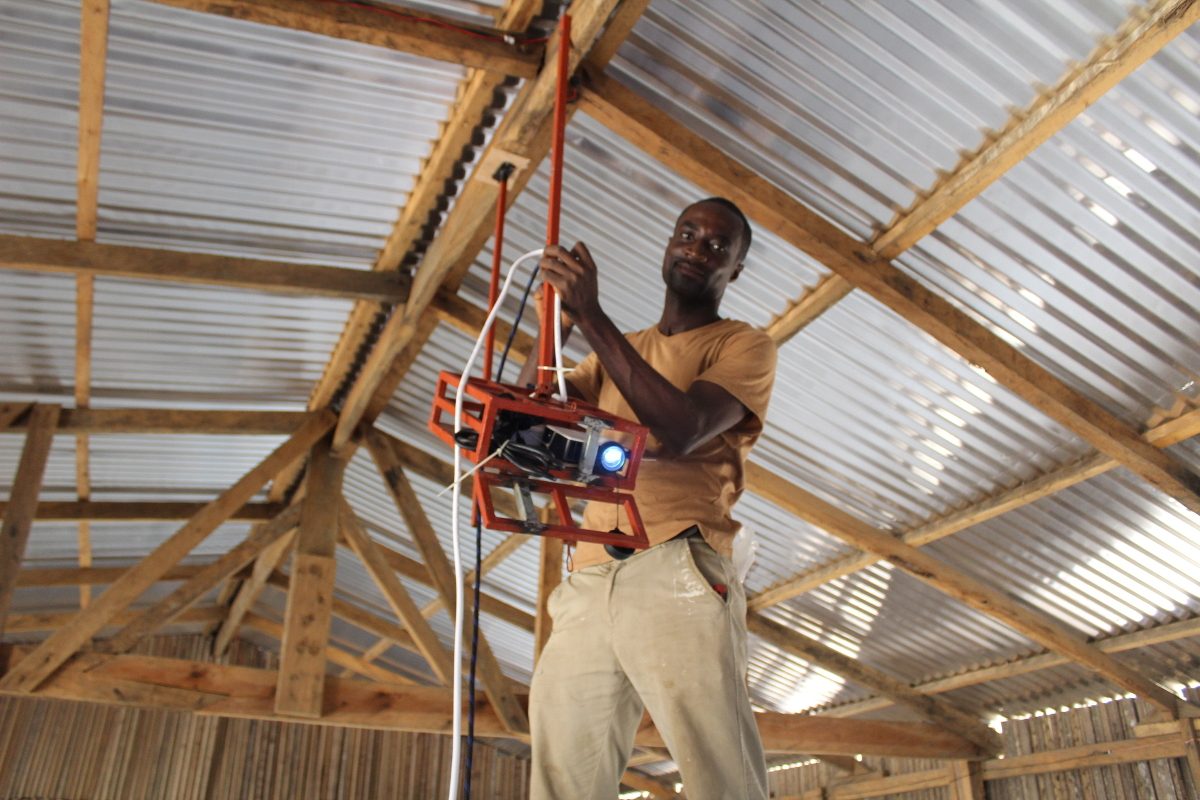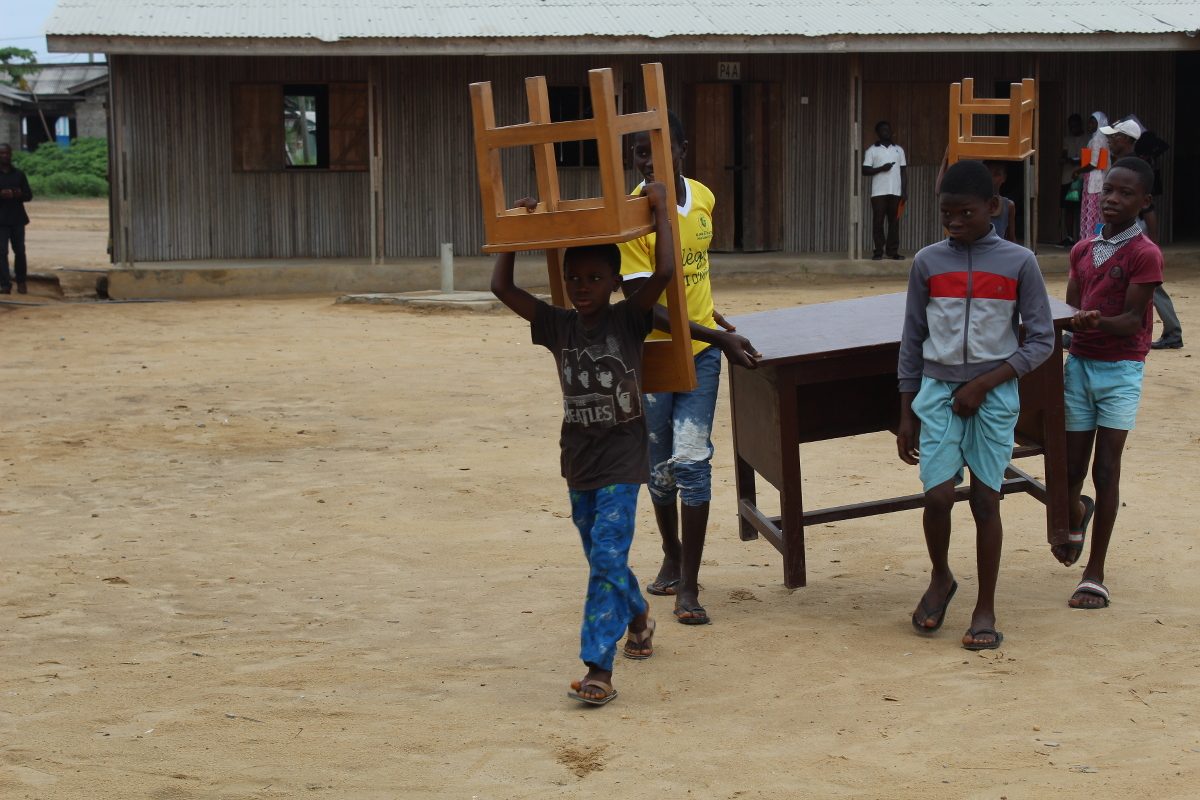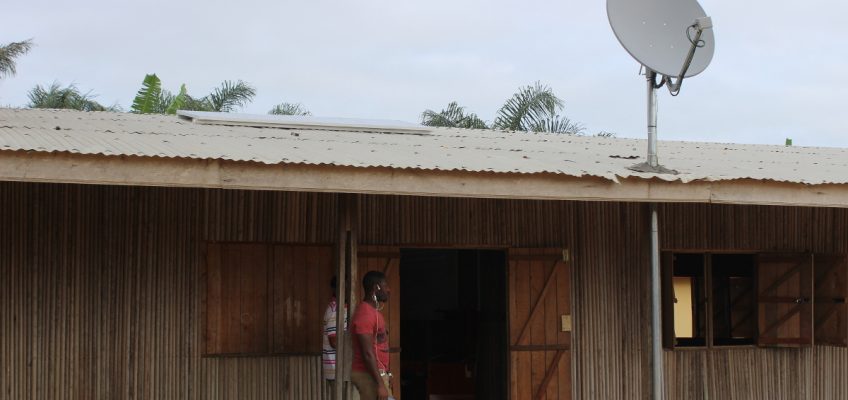The world’s first satellite-enabled interactive distance learning project is enabling refugee children in Ghana to continue with their education
We tend to think of refugee camps as temporary structures, but most of us fail to realize that many people live in them for several years. This presents serious challenges, specially for children who face serious danger of falling behind with their schooling or dropping out of education altogether as it can be very difficult to get qualified teachers to reach the camps on a regular basis.

But now technology is bringing a cost-effective and viable solution to that problem, in a pilot project recently trialled at the Ampain Refugee Camp in Western Ghana. The camp was established back in 2011 to shelter displaced Ivoirians fleeing the hostilities following the November 2010 Côte d’Ivoire Presidential elections. It is currently home to over 3,000 people, including around 225 school-age children who go to the Ampain Primary school established within the camp.
The Varkey Foundation Teach to Reach Remote Classrooms Project is the first of its kind Click To TweetThe Varkey Foundation Teach to Reach Remote Classrooms Project (TRC) funded by the Office of the United Nations High Commissioner for Refugees (UNHCR) is the world’s first satellite enabled live two-way interactive distance learning programme for children living in a refugee camp. Each classroom in the school is equipped with a projector and a low-cost durable computer to receive lessons via a solar-powered satellite link. Since April, the foundation has been running interactive distance lessons from qualified teachers based at its studio in Accra to support the children in the camp with their learning.
While technologies such as Skype have been used for distance learning solutions in the past, but this is the first live, interactive two-way satellite enabled project to reach refugee children in sub-Saharan Africa Click To Tweet
According to Vikas Pota, CEO of the Varkey Foundation, the goal of the Ampaign project is to prove that the concept works in an emergency situation to increase children’s school attendance and build opportunities for teachers and community members that directly impact learning for pupils.
“This project can make a real difference because it is quick to mobilize and can be scaled up, delivering lessons to more refugee settings around the globe. Most importantly, it is a long-lasting solution which is what is required due to the length of time that children often end up staying in refugee camps,” he says.
While technologies such as Skype have been used for distance learning solutions in the past, but this is the first live, interactive two-way satellite enabled project to reach refugee children in sub-Saharan Africa. The Ampain primary school has been fitted with a satellite dish, which, through solar powered technology, receives a live link to highly qualified teachers in a studio in Accra who broadcast lessons direct to the refugee camp. Each classroom has a projector so all the children can see the teacher giving the lessons, and each classroom has also been provided with a computer so that children can interact with the teacher in a direct, live, two-way link.
This project can make a real difference because it is quick to mobilize and can be scaled up Click To TweetThis allows the refugee children – who are currently out of school and at risk of dropping out of education – to not only catch up with their basic education through literacy and numeracy lessons, but also learn the language of their host country, which is crucial for integration.
Ms. Ioli Kimyaci, UNHCR Ghana Country Representative says that this is a cost-effective way to enable children who otherwise would have been denied a quality education to have access to qualified teachers. “The beauty of this project is that it allows one good teacher’s reach to extend anywhere with the use of satellite technology, solar powered computer hardware and an interactive live feed inside the classroom,” she says.
The program also offers after-school sessions for both boys and girls to address gender specific issues and life skills, helping to create a safe environment that empowers pupils with leadership and decision-making skills.
The Teach to Reach program is based on the successful Making Ghanaian Girls Great! project Click To TweetThe “Wonder Women” after-school program, for example, teaches young girls about reproductive health, preventing early pregnancy, human rights awareness and financial literacy. It also emphasizes leadership skills that develop girls’ ability to advocate for themselves, interact with leaders in their community and stand up for issues important to them. The goal is to raise their self esteem and empower them to stay in school and reach their full potential.
Boys also learn these core skills to support them with specific challenges they face and encourage them to continue in their schooling, while also tackling harmful gender stereotypes through discussion and role-play, showing boys how a change in their behavior can help their sisters and female peers, and therefore their entire communities.
“Every child deserves an education, but refugees in particular are more often than not denied this right. According to UNESCO, refugees are five times more likely to be out of school than the global average. More than half of the 6m school-age children under UNESCO’s mandate have no school to go to, with some 1.75m refugee children not in primary school and 1.95m refugee adolescents not in secondary school,” says Leonora Dowley, Ghana Country Director at the Varkey Foundation. “What makes this project so exciting is that gives refugee children access to high quality teachers and does so extremely cost-effectively – we can reach more than 200 children who otherwise would not be getting any education at low cost but with significant results.”
The Teach to Reach program is based on the successful Making Ghanaian Girls Great! project (known as MGCubed), aimed at enhancing the quality of education for more than 10,000 marginalized children in Ghana since it was established in 2014. The Varkey Foundation is part of the #WithRefugees Coalition who are supporting the #WithRefugees campaign, a group of more than 100 universities, FBOs, youth groups, UN Agencies, and NGOs working with UNHCR to promote tolerance and respect for persons forced to flee. It also founded the Global Teacher Prize to shine a spotlight on the incredible work teachers do all over the world.
“Nothing beats having access to a great teacher who can add important context, stimulate discussion among children to help them truly grasp what they’re learning and broaden young minds,” says Dowley. “We believe it’s a highly replicable solution that could be deployed in other settings, and given the extent of the refugee crisis it will be exciting to see how things could develop on this front in future,” concludes Dowley.
This article was originally published on IDG Connect
How technology is helping education reach refugee children, by @alicebonasio from @CIOonline https://t.co/9UgA59FCJA
— Technology Experts (@IDGCN) June 27, 2017
For companies looking to gain a competitive edge through technology, Tech Trends offers strategic Virtual Reality and Digital Transformation Consultancy services tailored to your brand.
Alice Bonasio is a VR and Digital Transformation Consultant and Tech Trends’ Editor in Chief. She also regularly writes for Fast Company, Ars Technica, Quartz, Wired and others. Connect with her on LinkedIn and follow @alicebonasio on Twitter.









